*Zsuzsanna Kiss Soósnè1, Andrea Kovács2, Judit Kókai3
The aspects of starting a large family
1Associate Professor, Department of Clinical Studies, Faculty of Health Sciences, Semmelweis University, Budapest, Hungary
Head of Faculty: prof. Zoltán Zsolt Nagy, MD, PhD
2Health visitor student, Faculty of Health Sciences, Semmelweis University, Budapest, Hungary
Head of Faculty: prof. Zoltán Zsolt Nagy, MD, PhD
3Health visitor, Joint Institute of Health and Social Affairs, Győr, Hungary
Head of Institute: Mihály Panker
Summary
Introduction. Being raised in a large family is not only favourable regarding the development of the child but beneficial for the whole society as well. In Hungary fewer and fewer children are born and the number of children growing up in large families has been decreasing. So the examination of this field of subject from the perspective of healthcare has valid ground.
Aim. By studying the questionnares and interviews with students of the Semmelweis University Faculty of Health Sciences (SE ETK) we’ve tried to explore what can be done by healthcare professionals to improve the family planning of the youth. We focused on the opinions of health visitor students who were raised in big family. What are they thinking about starting their own family and how their origin and the healthcare system affects it? What are their views on the resources a large family provides?
Material and methods. The second, third and fourth year nurse, midwife and health visitor students of SE ETK filled out a quantitative questionnaire in spring 2012 as a part of a research launched in 2007, called ”Students’ Plans to Start a Family”. The size of the sample was 257. In this research we examined the issue of how to enhance the number of childbirth. Then we selected the third year health visitor students, among whom the number of people raised in a big family was the highest, in order to conduct a further interview with them in 2013 (8 students). The topics of the interview were the sociodemographic data of the students, the family of origin, the lifestyle in a big family, plans of having children generally among young people nowadays and in their own respects as well.
Results. After analyzing the interviews and questionnaires it has turned out that in the subjects’ opinion it is possible to support young people in starting a family via the healthcare system. They even have specific ideas regarding it. We’ve also learned that the financial background of the family, both nuclear and extended, is an essential factor when it comes to having children, and the healthcare services (general and specialised) plays an important role as well.
Conclusions. The healthcare professionals should know that when the time comes for young couples to make a decision on having children, the services they provide come into consideration as an important input. The good quality and the free of charge accessability of the specialised services related to giving birth and the medical assistance for taking care of the new-born baby are crucial, positive factors in making a lifetime decision about founding a family.
INTRODUCTION
Our topic is quite timely if we see the decline in the population and in the number of live births, as well as the growing number of abortions in recent years.
The Hungarian society is aging and the number of the population is shrinking year by year (1) (fig. 1).
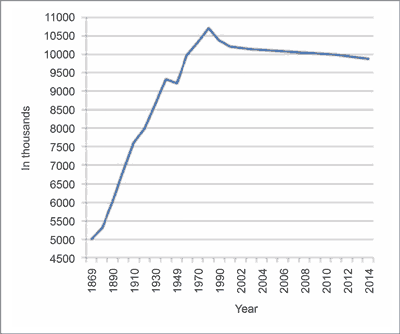
Fig. 1. Population (1).
If we see other developped countries, both the fertility rate and the life expectancy are low in Hungary.
The number of births in each year is determined by two important factors: women of childbearing age and their willingness to have children, in other words the fertility rate (2).
In the past marrying at a younger age and giving birth at the early stage of life was common. Having children was obvious, and the two-child model became natural. The women rarely gave birth after the age of 30-35, and there were just a small number of children born out of wedlock (3).
The number of birth has dropped becuase the attitude changed concerning the age women normally have children (4) (fig. 2).
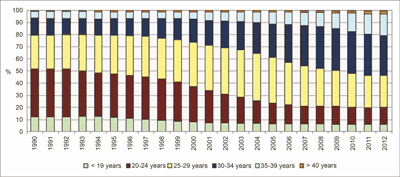
Fig. 2. Percentage of new-born babies based on the mother’s age (4).
According to a research conducted by the University of Eastern Finland the grandparents have big influence on having children. If they take part in raising the child, they support their children emotionally on starting their own family, it will be more likely that the couple plans higher number of kids (5).
The transgenerational effect is significant as well. If someone grows up having more siblings, there’s a high possibility that he/she follows this example (6).
The number of abortions is not negligible either if we study the trend of the changes in the population. Even though this figure falls in Hungary year by year, the percentage of termination is still between 46 and 52 in the case of third, fourth or fifth pregnancy (fig. 3).
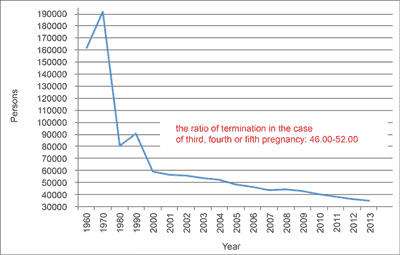
Fig. 3. Number of abortions 1960-2013 (1).
In the followong segment we’ll walk through the policy actions in Hungary that resulted important changes in the population.
The first measure in favour of the families with children was taken in 1912, which introduced family allowance for people working in the public sector. In 1938 this was extended to the citizens whose job related to industry or trade. A few years later the agricultural workers benefitted as well, and eventually it became universal (7).
The drop in the number of birth was observable after World War I.
The Article XXIII of 1940 was imperative in boosting the number of large families. Its main objective was to institutionalize the support of households with many children and help the families at the greatest risk to have substantial resources, some land and decent housing (8).
At the beginning of the 1950s Hungary’s fertility rate was moderate, or rather small compared to other countries. This prompted several state measures in order to motivate the families to have more children (4).
In the early ’50s the number of live births became highly concerning. In 1953 the government tried to tackle the issue with stricter rules on abortions and a new tax on couples who didn’t have children. A ban on abortion was in force until 1956, but after the revolution it was abolished, as well as the bachelor tax which had been levied earlier in that year (2).
Upon the start of the next decade the Hungarian fertility rate turned into one of the lowest worldwide. As more and more women started to look for a job, a noticeable percentage of the babies were born by working child-bearers. For the sake of maintaining the willingness towards having more children some compensation was necessary in exchange for the mothers’ foregone income. In 1967 a certain amount of child care allowance was introduced which allowed women to stay at home until the child’s third birthday, enjoying a fix grant for that period of time (4).
In 1973 the extent of the beforementioned contributions had been raised (family allowance, child care allowance).
In 1985 the child benefit was added as further assistance and the already operating subsidies had been incremented once again.
By the year of 1990 the the scale of family support in Hungary became quite remarkable on the European level. In 1991 it worthed as much as the 4.2% of the GDP. In this sense it was the biggest figure in the world at that time (7).
Later the benefits’ real value has dropped, which prompted the creation of the child-raising allowance in 1994. Its purpose was to ease the difficulties that large families had to bear. This was the time when the system of family support has consolidated into its form we know today. Since the new millennium only some quantitative and slight characteristic changes has been made (fig. 4 and tab. 1).
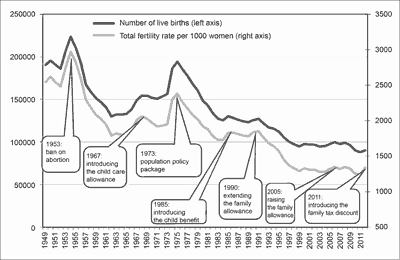
Fig. 4. Total fertility rate and the umber of live births; major measures related to family and population policy in Hungary between 1949 and 2012 (9).
Table 1. Current allowances and benefits for families with children in Hungary (10).
| Allowances to every parent | Allowances to large families | Means-tested allowances |
– Pregnancy-maternal assistance, maternal benefit (CSED)
– Child benefit (GYED)
– Child care allowance (GYES)
– Maternity allowance
– Baby bonds
– Family allowance (CSP)
– Family tax discount
– Child care sick pay
– Time off work in favour of fathers
– Parental leave
– Rest leave | – Child-raising allowance (GYET)
– Normative discount for school meals
– Free of charge school-book provision
– Travel discounts | – General child protection allowance
– Complementary child protection allowance
– Extraordinary child protection allowance
– Kindergarten allowance
– Housing allowance
– Temporary allowance |
AIM
In the aftermath of the previous century it became apparent that the financial benefits are not sufficient on their own to substantively increase the attitude to have children. Our research aims at what can be done by healthcare professionals in order to contriubute to moving this forward. Our enquiry was based on the opinions of students. We’ve tried to measure the resources that families with children have, as well as the healthcare services’ (general and specialised) effects on the family planning decisions.
MATERIAL AND METHODS
The empirical basis of our research is a questionnaire, and the special interviews with a particular sample, conducted after the analysis of these surveys. The interviews were recorded at the campus of Semmelweis University Faculty of Health, then using the voice material we documented the answers on paper.
The survey was filled out by 257 second-, third- and fourth-year nurse, health visitor and midwife students, 91 of whom came from big family. We’ve chosen the group from these three where the most responders had large family of origin (health visitor, III.). With these 8 students we made an interview. All of the subjects came from a family which showed them exceptionally good example.
RESULTS
In order to present the results we review the answers from the survey and the interview which were the most relevant ones for our reserch:
96.00% of the students we asked (N = 257) would like to have children, and 70.00% intends to plan it in advance.
Examining the connection between the family of origin and the plans for having children (tab. 2), we found that the students with large family of origins gave different answers than the ones who didn’t come from big family. There is a higher possibility that young people from large families wish for three or more children (p < 0.001).
Table 2. Correlation between the family of origins and the planned number of children.
| Family of origins | In case of perfect life
(%) | In case of favourable life
(%) | In case of unfavourable life
(%) |
| Students without large family origins (n = 167) | 56.7 | 30.5 | 8.5 |
| Students with large family origins (n = 91) | 79.7 | 59.7 | 35.2 |
There were only 7.71% who wouldn’t have more children than they initially planned, no matter how great the circumstances would be.
96.43% of the students think that there are options to enhance the willingness of having children. Half of them have the impression that actions are needed to be taken in the healthcare system for this: providing more information, presenting examples, better and more accessible healthcare services, improving the general state of health. A slightly bit more than the 1/3 of them had the idea that creating jobs and using more social assistance would be effective incentives to have more children. 16.00% would help by other means, for example with more emphatic approach or by improving the quality and capacity of nurseries and kindergartens. There were just a very few responders who don’t see any opportunity to improve the attitude to have children (fig. 5).
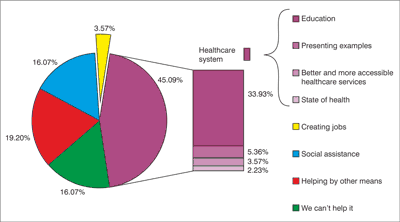
Fig. 5. How could we help the attitude of young people to have children?
During the interviews we’ve tried to find out whether the quality of services provided by health visitors, obstetricians, pediatricians and general practitioners influence the willingness of having children. According to the answers the obstetric service is regarded as the most important from these elements (6 students), followed by the quality of pediatric service and the assistance of health visitors, ranking the general practice to the 4th place.
Some opinions from the students:
’I think it really has an impact. I mean I know that at my place you could turn to the general practitioner whenever you have any problem or question related to your pregnancy. I know people who did that and he’s really helpful. Several kids have been born and raised smoothly because he supported and encouraged the young parents when they were uncertain if they can handle the responsibility that comes with having a child. So yeahh, it does matter whether or not they get support from the healthcare professionals’.
’Well, obviously after a negative experience people could find it hard to have more children. Anyway I think they own enormous amount of potential help, and let’s say resources, meaning the professional knowledge or other information’.
DISCUSSION
Generally we can draw the conclusion that the healthcare system has significant influence on having children or planning the number of babies.
On the basis of the interviews the positive effects of the healthcare services on the attitude towards having children can be described with the following elements: free of charge healthcare services, banned gratuity for doctors, humane treatment, less obstetric examination, proper care in the prenatal period (avoiding abortus), family planning counsel, information campaigns, friendly environment at the labour room, baby-friendly facilities and more accessible healthcare service.
In the course of the interviews we enquired what kind of resources do the families have if they get into a difficult situation. We asked what do they think about this in the sense of their own parents, and about themselves as future parents as well.
The primary and the secondary resources turned out to be mainly the nuclear and the extended family, but there were students who mentioned the general healthcare services, the faith, their friends and the social allowances too.
Regarding the tertiary and fourth priority resources the family is less significant, but the importance of the healthcare services and the friends is powerful. The responders mentioned in these categories the specialised healthcare services, their neighbors, their co-workers and the social allowances again.
CONCLUSIONS
Based on the results of our research it’s fair to say that the positive socioeconomic and personal elements and the financial resources have good influence on having children. At the same time the role of a well functioning family and the healthcare system is not negligible at all.
It is important to teach the family lifestyle and to highlight the significance of a big family as a resource. The education and training to tackle the shortcomings in the healthcare system that we pointed out in the research (humane behavior of the healthcare professionals, professionalism) is crucial as well and further measures are required too (free of charge services, high-quality, proper methods). It worths to note that further researches would be also useful in this field.
The results of our research indicate that the financial assistance is not sufficient to encourage the young people to have children, and a well functioning large family combined with the role of the healthcare system are imperative in this issue.
To summarize the results of our research which was conducted with a special sample we could say that the work carried out by the healthcare professionals, the financial support from the state and the positive family environment are the key elements for fostering the attitude towards having children.
The healthcare professionals could do more in order to intensify the number of children and large families.
We need to aim at the following: more accessible healthcare; reducing the financial burden of the families e.g. free of charge healthcare services without gratuity for doctors; humane treatment on the behalf of the professionals; reasonable, high-quality services in the course of family planning, pregnancy and child-birth. Information campaigns and education related to this matter as well as presenting positive exapmles of big families are important tools to fulfill these objectives.
The most important message of our research: although the statistical figures show that the latest social allowances evidently resulted higher number of birth recently, a well functioning large family and the high-quality healthcare services are crucial factors as well and they influence the creation of large families.
ACKNOWLEDGEMENT
We would like to thank the research team of the ”Students’ Plans to Start a Family” study which was launched in 2007 at the Semmelweis University Faculty of Health Sciences, the members of the Scientific Students’ Association and all the teachers who helped our research.
We also really appreciate the students’ effort who filled out our questionnare and the ones who agreed to be our subjects for the interview.
Piśmiennictwo
1. Központi Statisztikai Hivatal. Nèpessèg, nèpessègmozgalom. 2014. http://www.ksh.hu/docs/hun/xstadat/xstadat_hosszu/h_wdsd001a.html# (Letöltès ideje: 2014.01.04). 2. Cseh-Szombathy L, Tóth PP: Nèpesedès, nèpessègpolitika. Századvèg Kiadó 2001, Budapest. 3. Kamarás F: Termèkenysèg, nèpessèg-reprodukció. TÁRKI 2000, Budapest. 4. Központi Statisztikai Hivatal: Statisztikai tükör, 2013, VII. èvfolyam. 54. szám. http://www.ksh.hu/docs/hun/xftp/idoszaki/nepmozg/nepmoz12.pdf (Letöltès ideje: 2014.01.04). 5. Tanskanen AO: Isovanhemmat, vanhempien lastenhankinta ja lasten hyvinvointi. Väestöliitto 2014, Helsinki. 6. Bonin H: Geburten und Kinderwünsche in Deutschland: Bestandsaufnahme, Einflussfaktoren und Datenquellen. 2013: 61. http://ftp.zew.de/pub/zew-docs/gutachten/TeilstudieFertilitaet2013.pdf (Letöltès ideje: 2014.03.15). 7. Spèder Zs: Család ès nèpessèg – itthon ès Európában. Századvèg Kiadó 2003, Budapest. 8. 1940. èvi XXIII. törvènycikk 1-2§, http://www.1000ev.hu/index.php?a=3¶m=8137 (Letöltès ideje: 2014.01.04). 9. Földházi E: Magyarország nèpessègnek várható alakulása 2011-2060 között. Demográfia 2013; 56(2-3): 111. 10. Tájèkoztató a gyermekek után járó támogatásokról 2015. Emberi Erőforrások Minisztèriuma Központi Ügyfèlszolgálati Iroda 2015, Budapest. http://csaladitudakozo.kormany.hu/ (Letöltès ideje: 2015.01.15).




